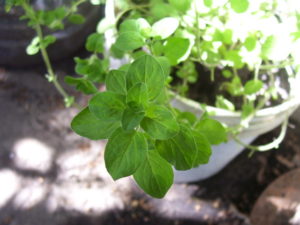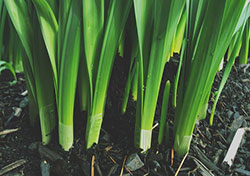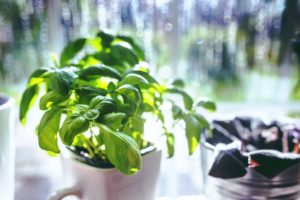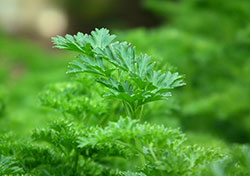Is it time to harvest your thyme but you have little to no idea how to do it without killing the entire plant? Don’t worry, you are not the only one who gets pressured during the harvest season. It is totally normal especially for beginner gardeners like you.
Fortunately, you have come to the right place. We have every information that you need! Not only will this article give you a step by step procedure on how to harvest or prune your thyme, but also include some growing and storing tips that are guaranteed to come in handy in the future.
So, gear up and gather your gardening tools as you indulge yourself in a first-hand experience of harvesting your first ever thyme produce.
Growing Conditions
If you are not the type to spend a lot of time in the garden yet would like to see some greens and healthy herbs thriving, you might want to start with thyme. You can consider this herb very low maintenance because it does not require much from you, especially not much from its growing requirements.
If you’d like to know how to grow a thyme here’s a beginner’s guide that you can read on.
- Weather Conditions
Summer is the best time to grow thyme. It thrives when the temperature hits 20-30°C. Nevertheless, thyme tolerates both hot and cold weather.
In case you are growing in winter, make sure to put your plants indoors and protect it from frost bites. As much as possible place it near the windows or any place inside the house where sunlight passes through.
- Sun Exposure
Thyme loves full sun. For best results, allow your thyme to receive an adequate amount of sunlight for at least 6 hours daily. Exposing your thyme to full sun also lessens the excess moisture in the soil that prevents the plant from having a rotten rot.
If you have a limited space outdoors, you have the option to grow your thyme indoors but make sure to place it near a sunny window. Alternatively, you can use a standard fluorescent lamp and place it directly 2 to 4 inches above the thyme.
- Soil Requirements
The ideal soil for growing a thyme is light, well-drained, with pH between 6.0 and 8.0. Avoid planting your thyme in mushy, heavy soil. Oddly, it is best to grow thyme in a soil with poor fertility as the opposite produces large yet less fragrant plants, thus adding fertilizer won’t be necessary.
- Watering
When it comes to watering, you can say that thyme is low maintenance. Unless the soil that it thrives in is completely dry, you don’t really have to water it almost everyday. Simply put, thyme is drought resistant and actually grows best on the dry side.
When it is ready to be watered, be cautious not to overwhelm the plant. Just enough for the water to soak thoroughly, but avoid overwatering.
- Spacing
Thyme nurtures pretty aggressively and can grow as tall as 12 to 18 inches so you will need to allocate a pretty wide distance between each plant, about 12 to 14 inches apart.
- Companion Planting
If you want to maximize your garden, you should plant thyme together with herbs and vegetables that have the same sun exposure and watering requirement as it has. Some great examples would be broccoli, cabbage, eggplants, strawberry, tomatoes, etc. But, if you choose to grow your thyme in a container, you could also plant it with rosemary as they require a similar amount of water supply.
Thyme does not like to be in competition with grassy weeds, though so make sure to keep those away from your herb.
Harvest Period
You know that your thyme is ready to be harvested when its height reaches 8 to 10 inches. Since harvesting or pruning your thyme promotes a healthier and bushier plant, it is also best to regularly snip about 3 inches off of the herb all throughout the growing season.
If you intend to use fresh thyme as an added spice to your dish, you should harvest it just before it starts blooming because it is when its flavor is strongest. Harvesting in the morning is also most recommended when the oil concentration is high and the dew has just dried up.
Process Of Harvesting Thyme
Pruning is the best way to harvest thyme. Not only does it allow you to carefully harvest without killing the plant, it also helps your thyme grow more vigorously and produce more flavorful foliage. Follow these steps whether you plan on using thyme as an added spice to your dish or you just want to promote healthy growth.
Pruning for cooking purposes
- Using a pair of small garden scissors, cut just below the growth node or where new bunches of leaves are forming, leaving the old, woody stems still intact.
- When choosing which stems to cut, pick the ones where you can still leave at least 5 inches of growth so it can thrive.
Pruning for further growth
- Unlike in the process of pruning for cooking purposes, cutting off the old and woody stems of the thyme is recommended if you want to keep your plant healthier and bushier. Do this when you notice new growth at the base of the plant.
- Cut strictly ⅓ of these woody stems. Cutting more than ⅓ will slow down the growth of your thyme. Use a sharp pair of scissors in doing this step to avoid damaging the new growth.
- When the flowers of your thyme start to fade and die, pick them out of the plant by cutting its stem just below the flower head, above the bunch of fresh leaves. Doing so will make your plant focus its energy on producing new growth, keeping your leaves and stems healthier and more flavorful.
- About one month before the first frost, cut off the top third of your plant in preparation for the winter. Snip off only the soft parts of the stem and avoid cutting past the woody portion of the plant as this is where new growth will turn up.
Harvesting Tips
Opposite to cultivating thyme, harvesting it can be a bit of high maintenance. Doing it carelessly can make your plant stagnant and sterile and it can also affect the flavor and fragrance of the leaves. To avoid these unfortunate events, take note of these important tips when harvesting thyme.
- Establish a regular pruning schedule. Lack of pruning can cause your stems to become woody, thus won’t produce any more new leaves and stems.
- After harvesting, do not bother washing off the clean leaves as it removes some of the essential oils.
- Consider harvesting thyme in the morning to maximize its strong flavors.
Storing And Using
Thyme is best used both fresh and dry. You may regularly snip leaves and stems off of the plant as needed, or you could also harvest in bulk and store some of it for future use. If you choose to do the latter, there are various ways to dry them up that you could try at home.
But, first, make sure to wash off your thyme to get rid of dirt, pests, and fertilizer residue if you ever used any.
- The easiest and most basic way to dry your freshly harvested thyme is by laying it flat on a clean cloth or a cookie sheet. You can pat dry the thyme immediately after washing to help lessen the moisture. In a couple days, your thyme should be completely dried up and ready to be stored.
- If you do not have enough space to lay flat all your harvested thyme, you can just hang it upside down with the stems bundled altogether. For quicker results, place them in an area with a temperature of at least 50 F and avoid direct sunlight. It should be ready in a week or so.
- Using a food dehydrator can speed up the process of drying your thyme and thoroughly squeezes out the excess moisture off of the herb. To proceed, lay the stems in a single layer onto the rack. This process will take about 2 days.
- The fastest and most mold-resistant way to dry your thyme is by baking it in an oven with a temperature of 180 °F. Place the thyme on a cookie sheet with the door propped open and it should only take 2 hours for the thyme to completely dry up.
Otherwise, if you want to preserve your thyme whilst keeping it fresh, you could simply put it inside a plastic bag or a ziplock and keep it in the fridge. It is without a doubt that fresh thyme has a stronger flavor than the dried ones. These frozen thymes can be used up to a week.
Store the preserved thyme in an airtight container and place it in a warm, dim area. Exposing it to light and moisture can alter the natural strong flavor of the herb.





